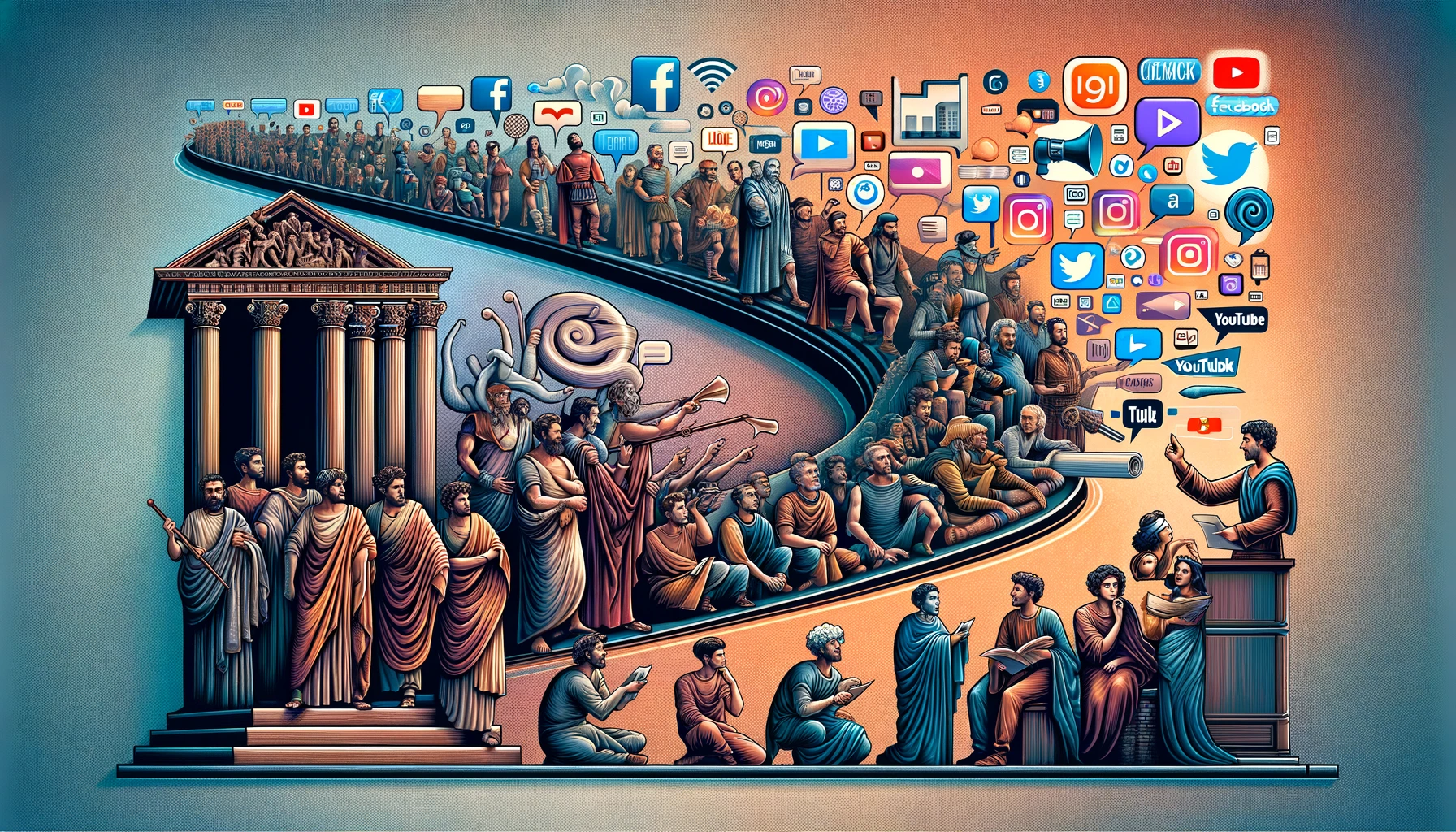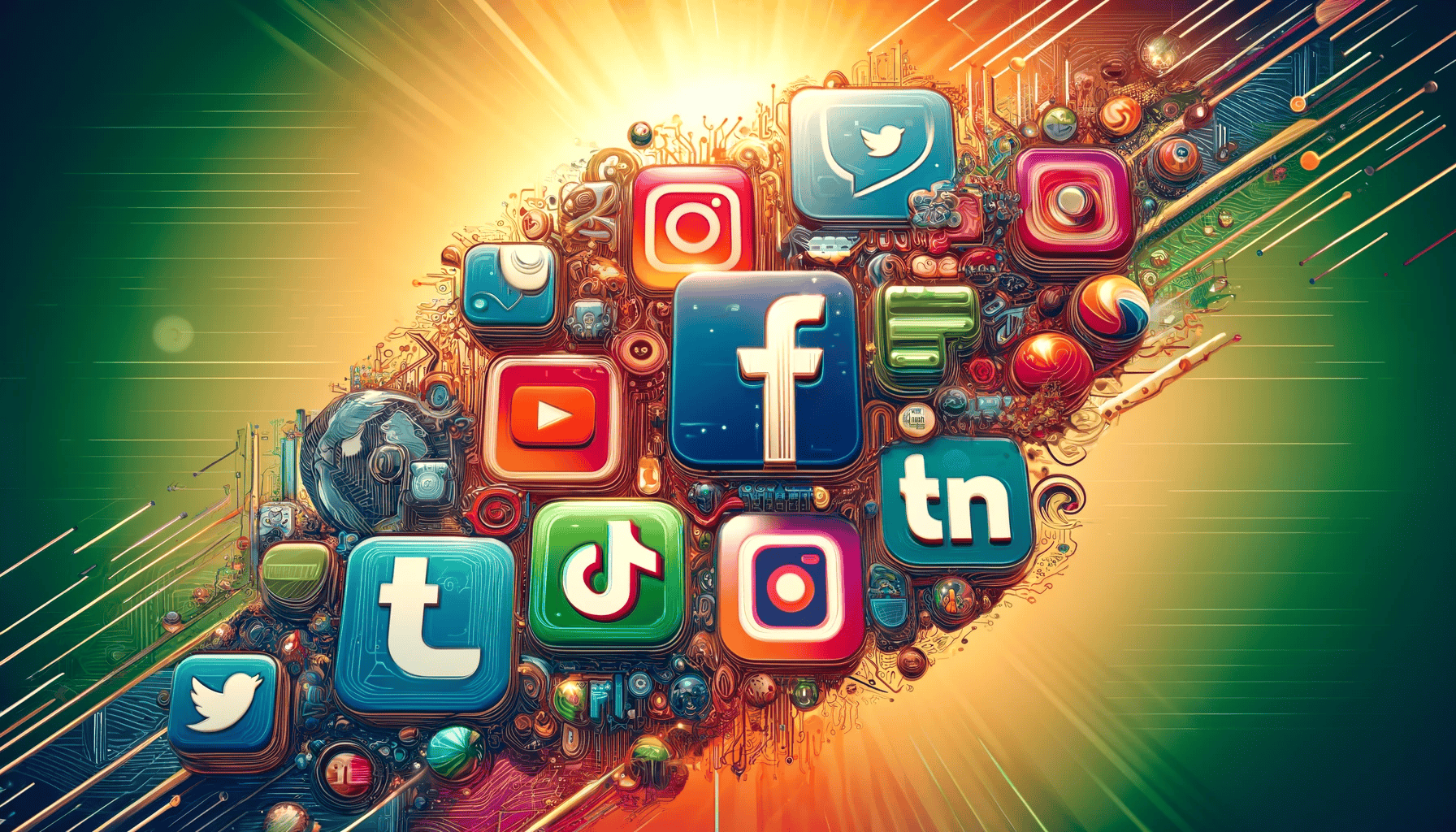The Future of Brand Growth: Harnessing the Power of Influencer Marketing in 2024
Successful influencer marketing campaigns can be expedited through Lever.io's unique influencer marketplace, helping brands collaborate with content creators with the click of a button.

Influencer marketing is a gamechanger for brands in the first half of the 21st century. However, did you know that influencer marketing has been around since gladiators slapped swords and sandals around the Roman Empire?
When you harness the authentic voices of social media personalities in 2024 and beyond, you are tapping into a powerful source of consumer trust and engagement that has been around for hundreds of years!
Key Takeaways
- Influencer marketing has evolved from celebrity endorsements to authentic collaborations with social media influencers, leading to a more genuine connection between brand and audience.
- Influencers are categorized by follower count into micro, macro, and mega-influencers, each offering unique benefits, with a notable rise in micro and nano-influencers due to their targeted engagement and authenticity.
- Successful influencer marketing campaigns can be expedited through Lever.io's unique influencer marketplace, helping brands collaborate with content creators with the click of a button.
The Evolution of Influencer Marketing from The Colosseum to YouTube

Influencer marketing isn’t a new concept. It dates back to:
- The 18th century when English potter Josiah Wedgwood used royal endorsements to boost his brand’s prestige.
- The 19th century, when figures like Lillie Langtry became the face for Pears’ Soap, demonstrating early character branding.
- Ancient Rome, where prominent gladiators would endorse products in their community.
- The 20th century, with campaigns like the Marlboro Man in the 1950s that utilized a strong character to mold consumer perceptions.
So, influencer marketing isn't something new at all; it has been around for centuries, and it has been working for centuries.

What has changed about influencer marketing is the way influencers reach their audience: the rise of the internet and social media platforms that now connect billions of people around the globe.
The shift from celebrity endorsements to authentic collaborations
As the influence of social media influencers grew, brands began to recognize the value of authenticity.
It has been observed that consumers are growing distrustful of traditional celebrity endorsements, considering them less authentic. Instead, consumers responded better to authentic collaborations, where influencers actually use and believe in the products, resulting in higher engagement rates and trust among followers.
This shift in consumer behavior has led brands to re-strategize their influencer marketing campaigns. They have started focusing on smaller, niche influencers who can provide more genuine and relatable content to their engaged audience.
This change not only increases the credibility of their campaigns but also paves the way for a more personalized and authentic form of marketing.
The rise of social media influencers
Over the years, influencers have captured audiences through Roman murals, TV commercials, and now—social media. Rather than trusting an influencer's credentials via their celebrity status, social media has given users and consumers an unprecedented amount of contact time with influencers, building trust.
Social media's top influencers have carved out a niche for themselves in various industries, amassing significant followings and millions of dollars in profits from views alone. Some examples include:
- MrBeast, with over 240 million subscribers, is a testament to the power of content creators reaching the masses through YouTube.
- Markiplier and Jacksepticeye have dominated the gaming niche on YouTube with their unique content including reaction videos and playthroughs.
- Davie504 engages his 13+ million subscribers with creative bass guitar music content, blending memes with solos and challenges.
But it’s not just gaming and entertainment that attract audiences; influencers have made a mark with communities in nearly every sector imaginable. Considering the growth curve of Web3 and crypto, influencer marketing is poised to explode as blockchain technology continues to emerge as a major disruptor.
Types of Influencers: Micro, Macro, and Mega

Just as the tactics of influencer marketing have evolved, so have the influencers themselves. Today, influencers are categorized into three main types based on their follower counts, each with its unique benefits for brands:
- Mega-influencers: These influencers have follower counts exceeding 1 million and are generally celebrities with broad online appeal rather than narrow niche specialization.
- Macro-influencers: These influencers operate with follower counts in the range of hundreds of thousands but less than a million.
- Micro-influencers: These influencers have smaller follower counts, typically ranging from a few thousand to tens of thousands. They have a highly engaged and loyal audience within a specific niche.
Understanding the different types of influencers can help brands choose the right influencers for their marketing campaigns and target the right audience.
Setting Trends with Micro-influencers
Micro-influencers are characterized by their follower count, typically ranging from 10,000 to 100,000 on social media. But don’t let the smaller numbers fool you.
These influencers have been gaining in popularity for marketing collaborations due to their high engagement rates and cost-effective outreach.
They engage their audiences through a mix of content platforms, such as Instagram, TikTok, and YouTube, thus appealing to diverse viewer preferences and increasing their effectiveness for brands.
Key Components of a Successful Influencer Marketing Campaign

There are several key components of a successful influencer marketing campaign. Using Lever.io can make it easier than ever to tick the boxes for a successful collaboration with the right influencers.
Identifying the right influencers
Identifying the right influencers, including the right influencer with niche expertise, is a crucial step in executing a successful influencer marketing campaign. This involves finding suitable influencers with high audience engagement and values alignment with a brand.
Tools like Lever.io can help brands efficiently identify influencers who align with their specific target audience through advanced filtering options. By choosing influencers who have a genuine appreciation for a brand and its products, brands can maintain the authenticity of the promoted content.
Additionally, Lever.io provides proprietary metrics to identify influencers with strong outreach potential. Metrics such as RVPV (Recent Views Per Video) and EVC (Expected View Count), data only available on Lever,io, can help brands plan their campaigns when searching for the right Web3 influencer.
Crafting engaging and authentic content
Another trait of a successful influencer marketing campaign is crafting engaging and authentic high-quality content. Instead of focusing on direct selling, influencer-driven narratives that strike an emotional chord with the audience can foster stronger connections and be more effective at driving consumer action.
Working with influencers who can authentically endorse products or services is a key focus for brands in influencer partnerships. This authenticity is enhanced when influencers are allowed creative freedom within brand guidelines, ensuring that the brand is seamlessly incorporated into their content.
Lever.io helps foster collaboration between brands and influencers through its native chat feature. As soon as brands fund a campaign with an influencer, the chat function enables marketing managers and content creators to share ideas and work towards crafting engaging content.
Influencer Marketing Trends to Watch in 2024

As we move further into 2024, the influencer marketing landscape continues to evolve. There is a noticeable trend for brands to prefer collaborations with nano- and micro-influencers, suggesting a shift towards more grassroots-level influencer marketing.
The rise of nano-influencers
The rise of nano-influencers is one of the influencer marketing trends to watch in 2024. As the digital landscape evolves, brands have shifted towards collaborations with nano and micro-influencers to reach niche, engaged audiences. Nano-influencers, who have a smaller but highly engaged following, are becoming increasingly popular among brands for marketing purposes.
Small brands are particularly inclined to work with nano-influencers, seeing the value in the targeted and intimate audience these influencers possess. The rise of nano-influencers is set to significantly impact influencer marketing strategies as brands seek more authentic and niche-targeted engagement.
Diversification of platforms and content formats
Another trend to watch in 2024 is the diversification of platforms and content formats. Short-form video content is anticipated to maintain its dominance in influencer marketing strategies. Platforms that favor short-form video like TikTok, Instagram Reels, and YouTube Shorts are forecasted to play a dominant role in this landscape.

Brands are expected to invest more in video-centric campaigns to leverage influencers’ storytelling abilities within these short formats. Quick-fire content, including Snapchat and Instagram Stories, provides brands with opportunities to create urgency and exclusivity, contributing to increased consumer engagement.
How Lever.io Can Help Your Brand Today and Tomorrow
Lever.io has built an influencer marketplace that helps your brand adapt with an ever-changing landscape. As this article has shown, brands are finding valuable ROI with influencers reaching a niche (but global) audience on a wide array of platforms, and Lever.io puts you in touch with these influencers.
Through Lever.io, your brand can access Web3 influencers of all sizes with niche followings and on multiple social media platforms to best suit your marketing goals. It's time to follow the latest trends with an advanced approach to influencer marketing, something that Lever.io strives to bring to your marketing needs.
Get started with Lever.io today!

